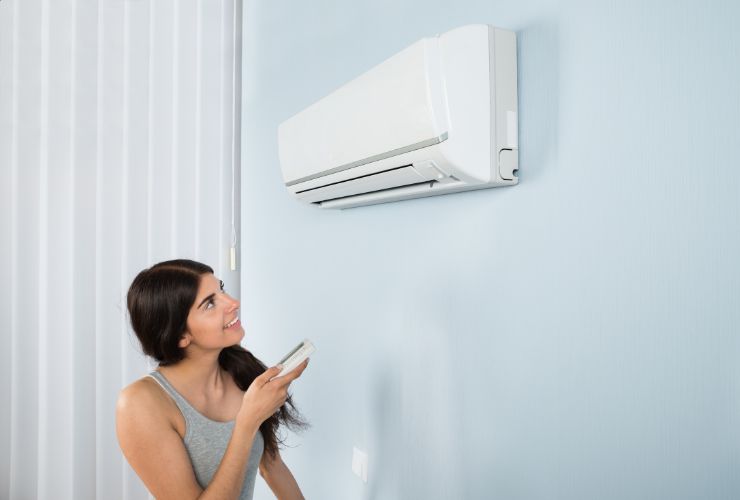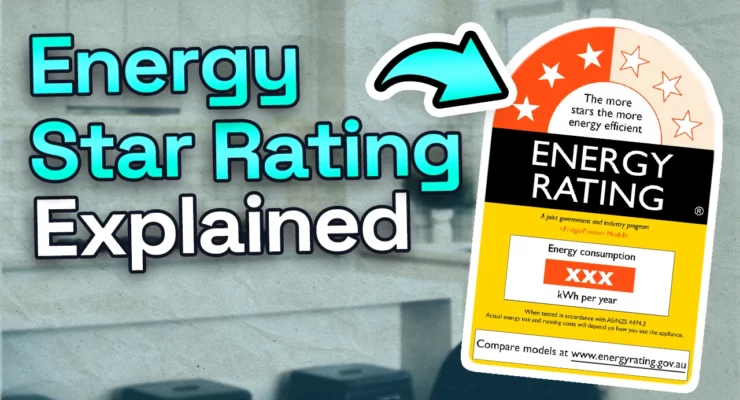Fast read
By law in Australia, the energy rating label must be displayed on the appliance. The energy rating uses a star rating system to rate how efficient an appliance is compared to other models similar in size. The more stars the better the efficiency, and the lower the running costs.
The rating is based on industry-set standards that assume the frequency and consumption of appliances. The less electricity a system uses the cheaper it will be to run. The label is put onto the machine to help consumers be more informed and understanding about what they purchasing, and compare products.
To learn more about the energy rating system, consumers can visit the government's official website. For electrical and renewable products, it is recommended to engage with a qualified local supplier or installer.
Understanding the Energy Star Rating label
In Australia, the Energy Star rating system was introduced in 1986 and has been updated many times. A government mandate requires the display of Energy Star rating labels on televisions, dryers, air conditioners, dishwashers, freezers, monitors, and refrigerators.
Energy Star rating labels tell you how energy-efficient these appliances are. Here’s what they mean:
The Energy Star rating system
- The more stars, the greater the efficiency: The stars on the label represent how energy-efficient an appliance is. The more stars it has, the less energy it consumes, and the more money you can save on electricity bills.
- Compare similar products: When comparing Energy Star ratings, make sure you’re looking at similar products. Comparing an air conditioner’s stars to a washing machine or refrigerator’s stars will not provide useful information. You have to compare within the appliance category.
- Now it can go up to 10 stars: Recently, the labels have been updated to go from 6 stars to now include up to 10 stars. Anything over 6 stars is considered ‘super-efficient’ and represents the cutting edge in energy-saving technology.
- Changes over time: The star rating system isn’t cast in stone. As technology improves, the criteria for earning Energy Stars change, so a 5-star rating now might mean something different than it did only a few years ago.

Energy consumption is the key
- Annual estimate on the label: The label also provides an estimated annual energy consumption in kilowatt-hours (kWh). This figure gives you an idea of how much energy the appliance will use in a year if used as most households would use it. This helps you to estimate the appliance running cost.
- Factors affecting consumption: Keep in mind, that the actual energy consumption will vary depending on how you use the appliance and the climate in your area.
How do the stars get determined?
Standardised tests determine the number of stars an appliance receives. An algorithm then processes the test results to determine the appropriate Energy star rating. These tests are based on energy usage assumptions. The assumptions are;
- Washing machine- 7 uses per week, using a warm wash
- Dryer- 1 full load per week
- TV and monitors- 10 hours in use plus 14 hours on standby per day
- Dishwasher- 7 uses per week at the ‘normal’ setting
- Fridges and freezes- in use 24 hours a day, all year
To reach the Australian market, new washing machines, dryers, refrigerators, TVs and dishwashers must receive a rating of at least 1 star. Star ratings are reviewed over time to compare newer and older models as efficiency improves.
Tips and practical information
- Calculating the running costs: You can use the energy consumption figure on the appliance to calculate the estimated annual running cost yourself. Multiply the total energy consumption in kWh by the electricity tariff in your region (cents/dollars per kWh). For example, with an energy consumption of 500 kWh for a large double-sided fridge and an average tariff of $0.40 per kWh, the estimated annual running cost of this appliance will be d be $200 (500 kWh x $0.40).
- Label evolution: Stay informed about any updates to the label system, as ongoing improvements in technology might lead to changes in the program’s design and Energy Star ratings. A federal Government-run website also has the latest information on the program.
The Energy Star rating system is more than just a sticker; it’s a tool to help you make informed decisions when buying appliances. These decisions will then shape your energy bill for years. Understanding it can help you choose products that are better for the environment and your wallet, aligning with both sustainability goals and practical financial considerations.

Do not ignore the Energy Stars
In light of the steep electricity and gas energy increases, it is crucial when shopping to consider the Energy Star rating as one of the critical factors when choosing an appliance. While most low-star rating appliances will be a little cheaper, the higher running costs will vaporise your initial savings when the sky-high electricity bills come through. Try to stretch the appliance purchase budget a little during the initial purchase and enjoy long-term savings via lower energy consumption, which is possible with more efficient appliances.
What does the energy consumption number mean?
You will also see an energy consumption number on the Energy Star rating sticker. Energy consumption is all about how much electricity the appliance uses. The number is based on standardised testing and displayed in kWh to ensure this rating is consistent across all appliances.
This testing is required by law and is the official Australian and New Zealand standards. Unlike the Energy Star rating, you can compare the energy consumption of appliances of different sizes.
The lower the energy consumption, the better, as the running costs will be less.
Why label appliances with the Energy Star rating system?
Making a visible and easy-to-read label allows consumers to gain important information before purchasing an appliance. Instead of learning how much your new appliance costs to run on your electricity bill, you can determine at the point of sale BEFORE the damage is done.
The label is also part of the Australian Government’s energy efficiency initiative. By putting the title on appliances, consumers can make more energy-conscious decisions. This also creates competition between brands to make the most energy-efficient model.
Overall, the Energy Star rating system is for you – the consumer.



